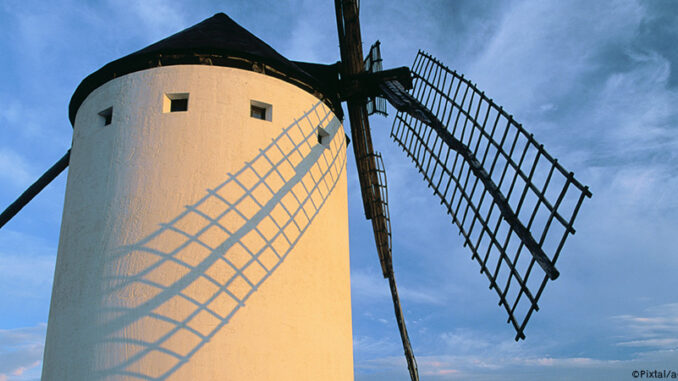

In honor of Hispanic Heritage Month, let’s take a look inside one of the most influential books of all time.
Written by Spaniard Miquel de Cervantes in 1605 (with a Part Two published in 1615), El Ingenioso Hidalgo Don Quixote de La Mancha (commonly known as Don Quixote) is also considered by many to be the first “modern” novel. What is the novel about, why is it considered influential, and how has its influence been demonstrated in modern culture? Let’s take a look.
Birth of a Classic
Cervantes had been a soldier in Spanish army when he was captured and held prisoner for five years in Algiers. He began writing shortly after returning home. His personal papers indicate he wrote several plays. (Only two were ever recovered.)It is believed that Cervantes began working on the premise of Don Quixote while imprisoned for “accounting irregularities.”
The story centers around the adventures of main character Alonso Quixano (who later takes on the name Don Quixote), and his sidekick Sancho Panza. Cervantes’ main character was preoccupied with “chivalric novels” (a popular genre of the era that featured stories of heroic medieval knights). And so, Don Quixote sets off on a grand quest. In one of the most famous scenes from the book, Don Quixote hallucinates that several giant windmills are giant knights and begins to attack them.
Part Two of Cervantes novel was published ten years after the original–and in response to a fake sequel written by an imposter. The second part of the story is considered more contemplative and serious than the first, which is considered by many scholars to be a comedic satire of medieval romances. Both volumes of Don Quixote were written during the Spanish Golden Age (betwee 1492 and 1659). Beginning with Christopher Columbus’ exploration of the Western Hemisphere, this period of Spanish history is marked with many of its greatest artistic expressions.
A Wide-Ranging Influence
Don Quixote is often considered the “first modern novel” because it was one of the first to have a fictional narrative. The Iliad and The Odyssey, for example, contained stories but were both epic poems. Cervantes was also one of the first writers to include an inner exploration of the main character. The characterization throughout the novel is also considered groundbreaking because it set into motion a series of changes in how people began to understand the world around them.
In the years since its publication, Don Quixote has been translated into several languages and inspired numerous creative works in many art forms–other literature, drama, opera, ballet, film and art. Among the most popular are: Pablo Picasso’s 1955 sketch, Gustave Flaubert’s novel Madame Bovery, the 1965 Broadway musical Man of La Mancha, an album called Dulcinea (the name of Don Quixote’s love interest) by 1990s indie rock band Toad the Wet Sprocket.
And did you know that the alternative musical group They Might Be Giants took its name from a 1971 film entitled They Might Be Giants, which references Quixote’s windmill hallucination? One of the most recent adaptations of Cervantes’ classic tale is the film The Man Who Killed Don Quixote by director Terry Gilliam. This Gilliam film is a documentary featuring Johnny Depp that recounts the director and actor’s failed first attempt at an adaptation of the Cervantes novel.
